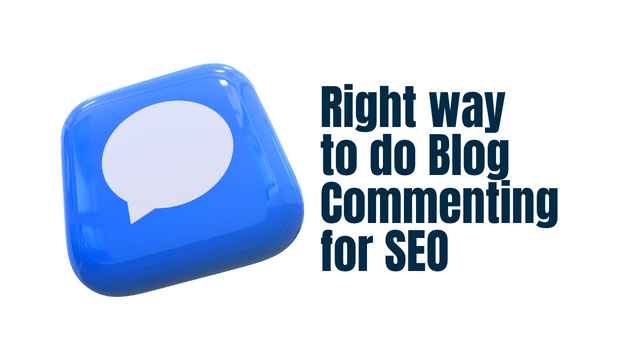Google’s Statement on Click-Through Rates (CTR) and Helpful Content Update (HCU)
Google’s Search Liaison recently addressed questions about the relationship between Click-Through Rates (CTR), the Helpful Content Update (HCU), and how Google ranks websites. In a series of tweets, they clarified misconceptions and provided insights into the workings of Google’s search algorithms.
A key part of this discussion was a quote from Google CEO Sundar Pichai, which stated, “Users vote with their feet.” This statement led to questions about whether user behavior, such as clicks, directly influences search rankings and how sites affected by the HCU can recover.
Confusions and Clarifications
The confusion began when a tweet implied that user clicks and reactions might heavily influence rankings under the HCU. This interpretation connected Pichai’s statement to the idea that user behavior directly impacts search rankings, which led to concerns about the ability of sites affected by HCU to recover.
However, the Search Liaison clarified that Sundar Pichai’s statement about users “voting with their feet” was not about search rankings or clicks but was in the context of user interactions with AI-powered search features. This misinterpretation highlights a common issue where statements about general user behavior are wrongly linked to specific algorithmic changes.
The Role of CTR in Rankings
CTR has long been a topic of debate in the SEO community. Many believe that higher CTRs can lead to better rankings, as it might indicate user satisfaction with search results. However, Google’s algorithms use a variety of signals to rank websites, not just CTR. Search Liaison emphasized that if CTR were the sole factor, new websites would struggle to rank as they wouldn’t have the initial traffic needed to generate clicks.
Google uses a combination of signals, including but not limited to “aggregated and anonymized interaction data.” This means that while user interaction data is considered, it is just one piece of a much larger puzzle.
The Importance of Quality Content
One of the main takeaways from Search Liaison’s responses is the emphasis on creating high-quality content for users, not just for search engines. The idea is to focus on providing valuable information that meets user needs. When sites see a drop in traffic, it can be tempting to focus solely on SEO tactics, but the underlying message is to prioritize content that genuinely helps users.
Off-Site Promotion and Its Impact
Another significant point raised was the importance of promoting websites beyond just focusing on search engines. High-ranking sites often receive traffic from various sources, including direct visits, email referrals, social media, and links from other websites. This multi-faceted approach not only diversifies traffic sources but also indirectly supports better search rankings by building a broader online presence.
Addressing False Positives
A common concern among webmasters is the impact of algorithm updates on their sites, especially when high-quality sites see a drop in rankings due to perceived algorithm errors, known as false positives. Search Liaison acknowledged this issue and suggested that future updates might correct these errors, allowing affected sites to recover.
They linked to a statement from John Mueller, a prominent Google representative, who noted that the search team continuously evaluates how to improve search results and surface more helpful content. This ongoing evaluation aims to ensure that quality content is recognized and ranked appropriately.
Evaluating Site Quality
Webmasters often assume their sites are high-quality, but it’s crucial to critically assess whether the site truly offers unique value to users. A common SEO strategy involves copying competitors’ tactics and attempting to do them better. However, this can backfire if it results in a site that offers nothing new or valuable compared to what’s already available.
Building a site primarily for search engines rather than for users can create patterns that signal low quality to Google’s algorithms. To avoid this, webmasters should ensure their content is original, useful, and tailored to their audience’s needs.
Practical Advice for Webmasters
The advice from Google’s Search Liaison is clear: focus on your audience. Understand what your readers want and need, and create content that addresses those needs. This approach is more sustainable and effective in the long run than trying to game the system with short-term SEO tricks.
Here are some actionable steps for webmasters:
- Content Quality: Create detailed, informative, and engaging content that provides real value to users. Avoid copying competitors; instead, offer unique insights and perspectives.
- User Experience: Ensure your website is user-friendly, with fast load times, easy navigation, and mobile optimization. A good user experience can indirectly improve your rankings.
- Diverse Traffic Sources: Promote your site across various channels, including social media, email newsletters, and partnerships with other websites. Diversified traffic can help build your site’s authority and reach.
- Stay Updated: Keep up with Google’s updates and guidelines. Understand the changes and adapt your strategy accordingly.
- Feedback and Improvement: Regularly gather user feedback and use it to improve your site. Whether through comments, surveys, or direct interactions, understanding your audience can help you refine your content and offerings.
- Patience and Persistence: SEO is a long-term game. Changes in rankings can take time, and algorithm updates can cause temporary fluctuations. Stay focused on your long-term goals and be persistent.
Conclusion
Google’s recent statements about CTR and HCU emphasize the importance of focusing on user-centric content rather than trying to manipulate search rankings through clicks or other metrics. By understanding the broader context of how Google’s algorithms work and prioritizing high-quality content and a diverse traffic strategy, webmasters can build more resilient and successful websites.
In the ever-evolving landscape of SEO, the fundamental principle remains: create content for people, not just for search engines. This user-first approach aligns with Google’s goal of delivering the most relevant and helpful search results, ultimately benefiting both users and webmasters.

